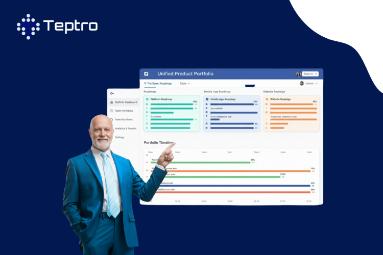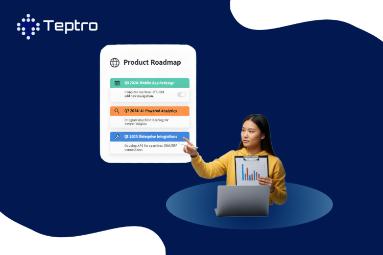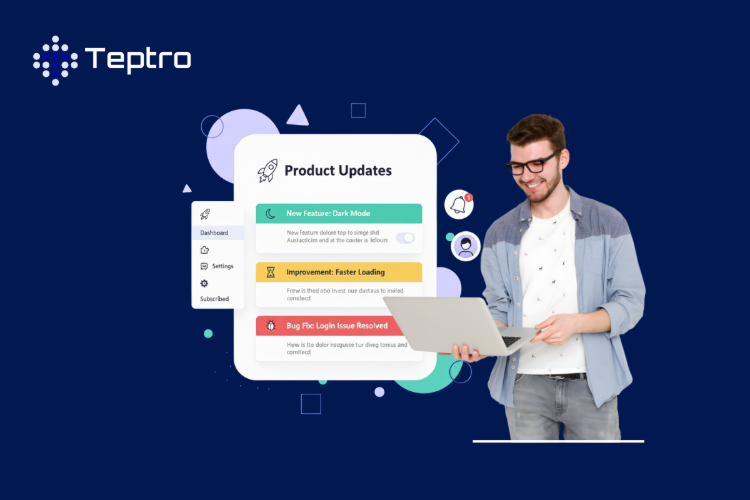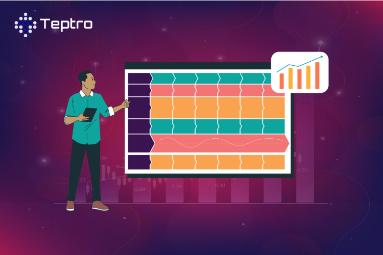Why Every SaaS Brand Needs Product Changelog Software
In the SaaS industry, the product updates are continuous and new features, bug fixes, and improvements are being implemented regularly. However, these changes are unknown to many users. How frequently do your users receive updates without getting your update? It is one of the typical difficulties of SaaS organisations across the globe. To communicate these updates in a structured manner, product changelog software offers a framework in which it is easy to explain how the product has changed. In addition to the basic record keeping, it assists teams to stay transparent, capture changes and make sure that each change will be value-adding to the customer. It is vital to the business owners because informed users are more engaged, satisfied, and faithful. What Is Product Changelog Software? A product changelog software is a platform that enables companies to record, structure, and provide product updates to users. A changelog gives users a single place to view all of the new, improved, and fixed features of a product, in contrast to traditional release notes that are buried in emails or blogs. The modern changelog platforms are frequently linked to customer feedback management and the user feedback software, and provide a feedback loop between the user and the product teams. It will ensure that real user feedback is taken into account to further enhance the product's usability and relevance, in addition to communicating updates. Why Transparent Product Communication Matters Successful SaaS products rely on communication. Whenever users know what has been changed and the reasons, they will embrace new features and keep using a product. On the other hand, bad communication may result in confusion, frustration and losing customers. The product changelog software is the type of software that allows companies to exercise transparency by offering:One of the main points of updates is that they are easily accessible.The categorisation of changes (e.g., new, improved, fixed) is precise.On-time updates on the product.This trust and credibility earned by SaaS companies through keeping their users updated can directly influence retention and customer satisfaction. Key Benefits of Product Changelog Software 1. Strengthens Customer Relationships Frequent updates posted on a changelog prove that the product is under active development and being maintained. When users are able to feel that their comments are heard with the help of user feedback software, it makes them even stronger in the process of developing a product. This degree of openness creates long-term relationships. 2. Improves Team Alignment The usage of a product documentation system with changelogs makes sure that every team inside the organisation, product, marketing, support, and sales, have an identical understanding. It minimises the risk of miscommunication, creates consistency in messages and allows teams to respond to customer queries authoritatively and accurately. 3. Boosts Product Adoption and Engagement Good communication of updates will motivate users to use new features that will increase their curiosity and learning curves. Whether it's a UI change or a new tool, users are more likely to interact with a feature they are familiar with, which will result in improved product adoption and satisfaction. 4. Supports Data-Driven Decisions Changelog analytics give information regarding the updates that users engage with most. This information assists product teams in learning the user priorities, monitoring engagement, and revising the product roadmap . This information, combined with customer feedback management, will make sure that the decisions made about products are based on what is needed by the actual user. 5. Serves as a Marketing Tool Changelogs do not fulfil the primary function, but can be used to assist in marketing. Publishing significant updates in newsletters or on social media demonstrates the constant improvement, authority, and open contacts with the potential purchaser, but without being too promotional. Best Practices for Using Product Changelog Software To maintain the maximum benefits, SaaS brands stick to the following best practices: Keep updates concise and clear: Avoid using too much technical language. Categorise changes: Use New, Improved or Fixed to better label updates. Include visuals: Screenshots, videos, or GIFs can make the users comprehend updates faster. Integrate with feedback channels: Make it easy for users to comment or suggest. Track engagement: Track what users find most valuable using analytics. Maintain a historical archive: The users should quickly be able to look up previous updates. With these practices, companies are able to produce a changelog that is not only informative but also actionable and allows their users to learn new features more rapidly and get a sense of being a part of the product journey. Real-World Impact Take an example of a SaaS company that used scattered emails to update customers about the product. Users were missing essential updates, resulting in low feature adoption and support tickets. Once a structured product changelog software had been implemented, any changes became centralised and accessible. Changes were also automatically notified to the users, and the interaction with new features grew considerably. The incorporation of the user feedback software enabled the firm to demonstrate to the users that their suggestions were not ignored. The outcome was increased satisfaction, less confusion and better retention without the product team exerting a lot of manual work. Final Thought Although the idea of product changelog software is notable to any SaaS brand, the selection of the appropriate platform is essential. The Product Changelog Software by Teptro provides an easy, professional and automated method of creating, sharing and managing updates. Teptro has such features as simple release-note generation, rich text editing, automatic notification, and analytics and can help SaaS teams stay transparent and ensure that users remain interested. Through the incorporation of customer feedback management tools, as well as the offering of a centralised system for product documentation , Teptro can ensure that updates are not only communicated but also supported by data and insights. In order to achieve better adoption, engagement, and trust in SaaS brands, Teptro offers an efficient solution that addresses any product strategy. A great product is not enough in a competitive market; you should also report the progress of the product. In the case of Teptro, each update will be a chance to improve relationships, increase adoption, and demonstrate your interest in users. FAQs 1. What is product changelog software? Product changelog software assists SaaS brands in capturing, managing, and communicating product changes to users. 2. How does it benefit SaaS companies? It enhances transparency, increases participation, decreases confusion and guarantees the users embrace emerging features successfully. 3. Can it integrate with feedback tools? Yes, it is compatible with customer feedback management and user feedback software, allowing for the monitoring and tracking of changes. 4. How quickly can updates be published? The interface and the rich text editor allow one to create and share updates in minutes. 5. Can users access past updates? Really, changelog programs give users the option to search through every past update of the products.
Read More

















